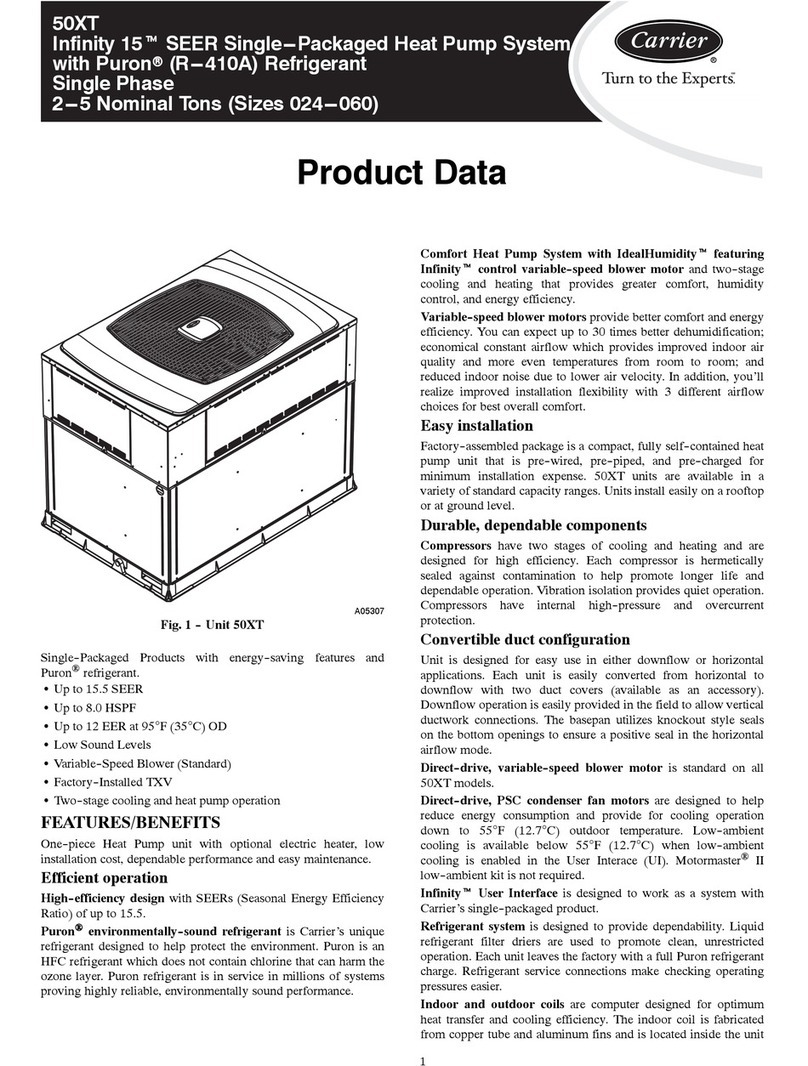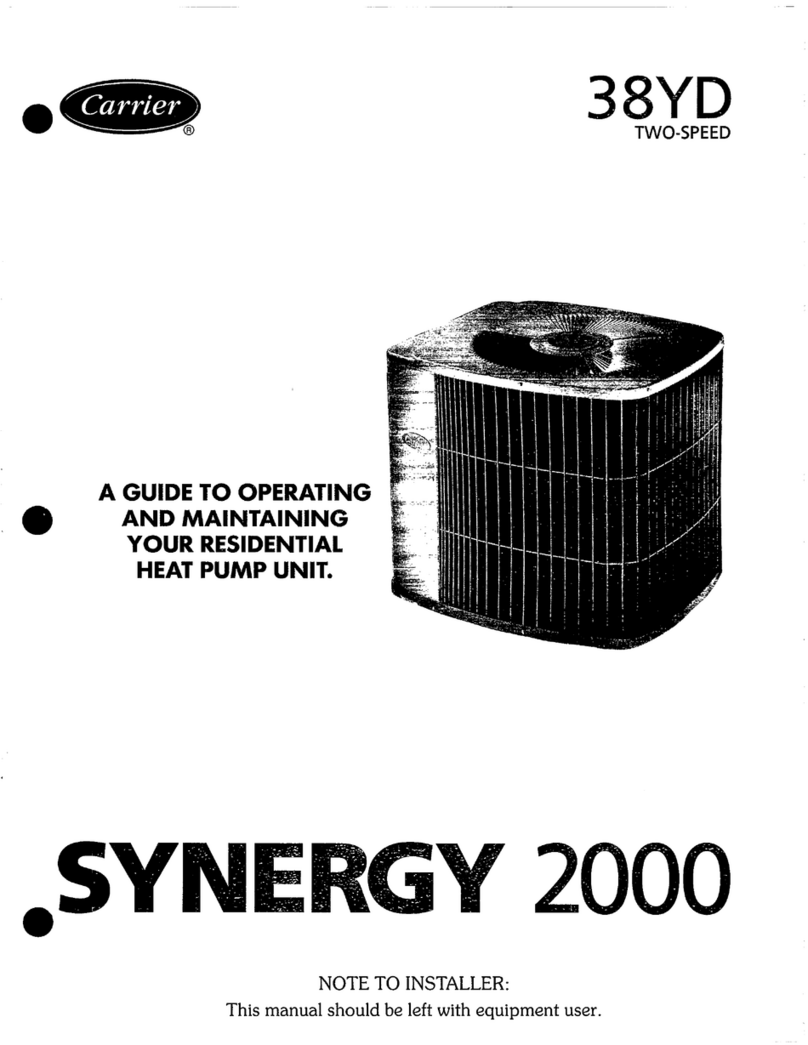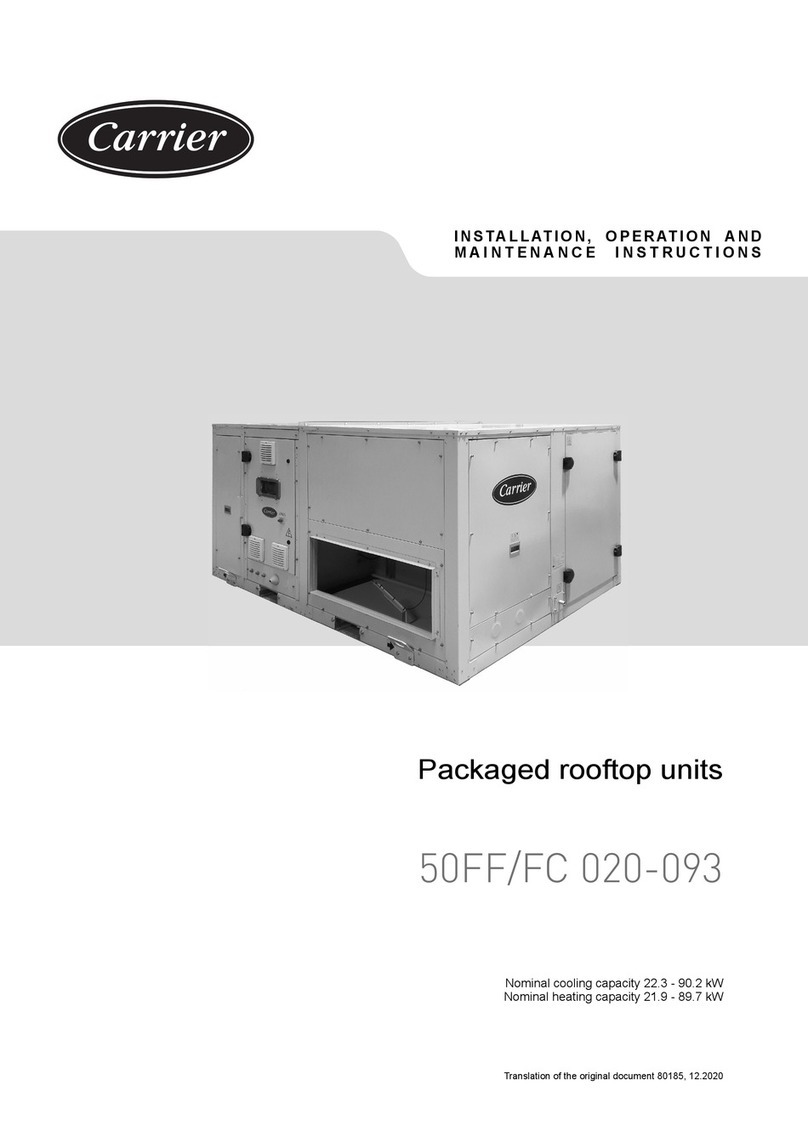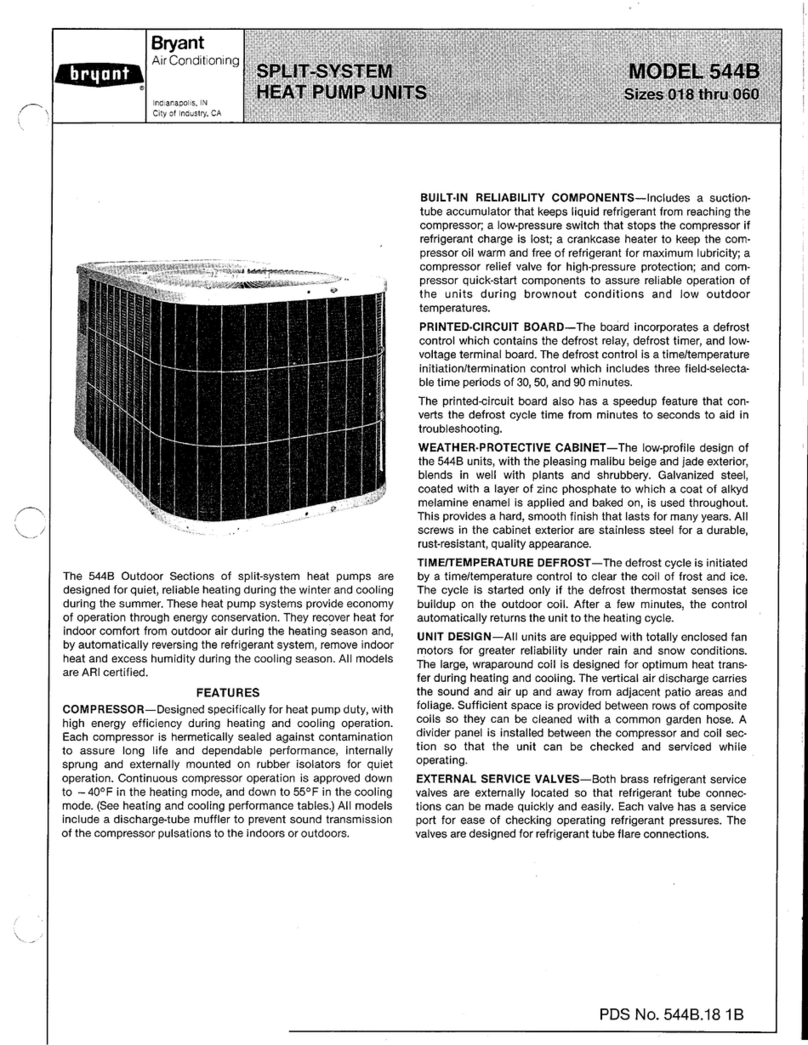Carrier Weathermaster 38HQ Dimensions and installation guide
Other Carrier Heat Pump manuals
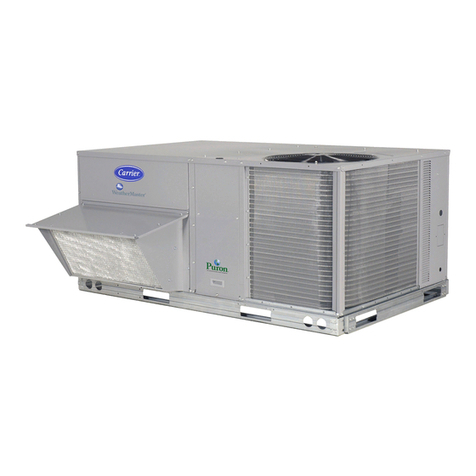
Carrier
Carrier 50HCQ04---12 Installation and user guide
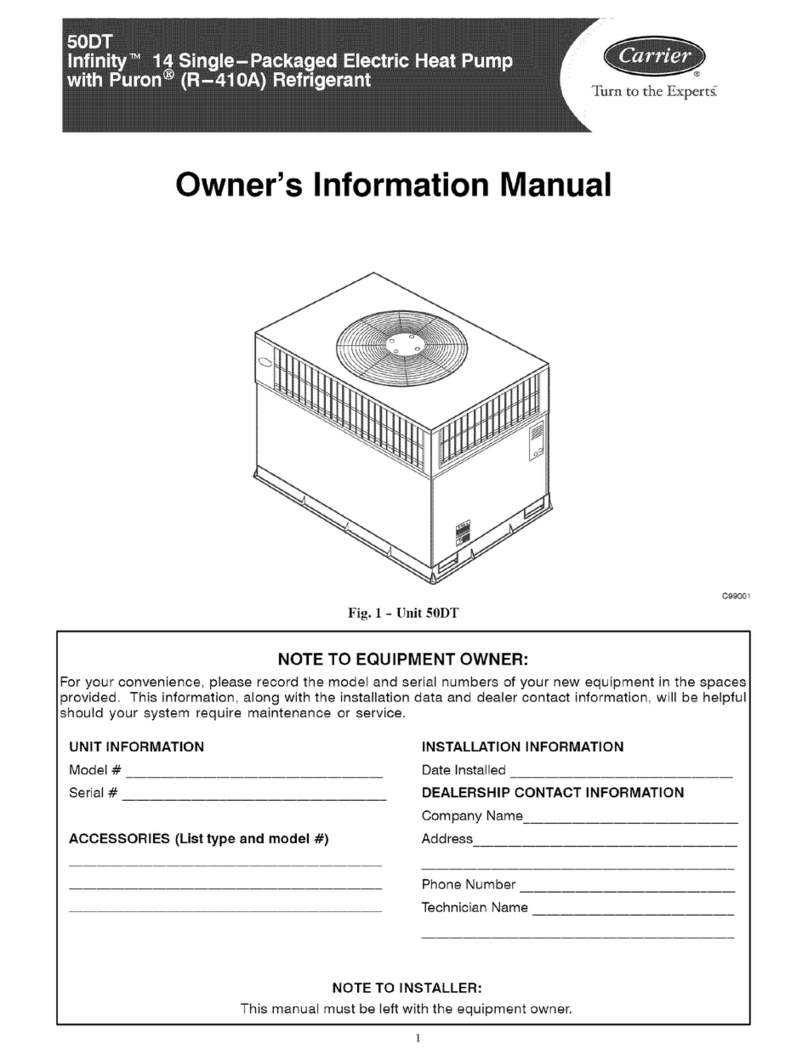
Carrier
Carrier Infinity 50DT Instruction Manual
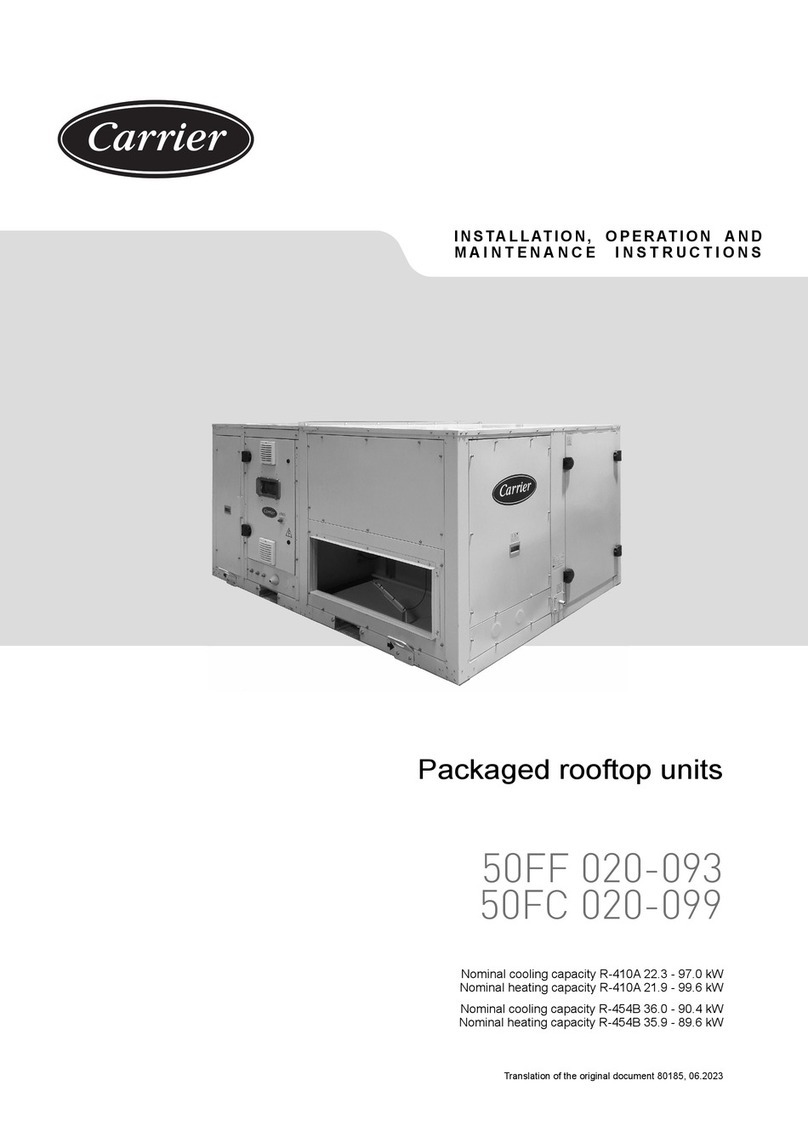
Carrier
Carrier 020-093 Manual
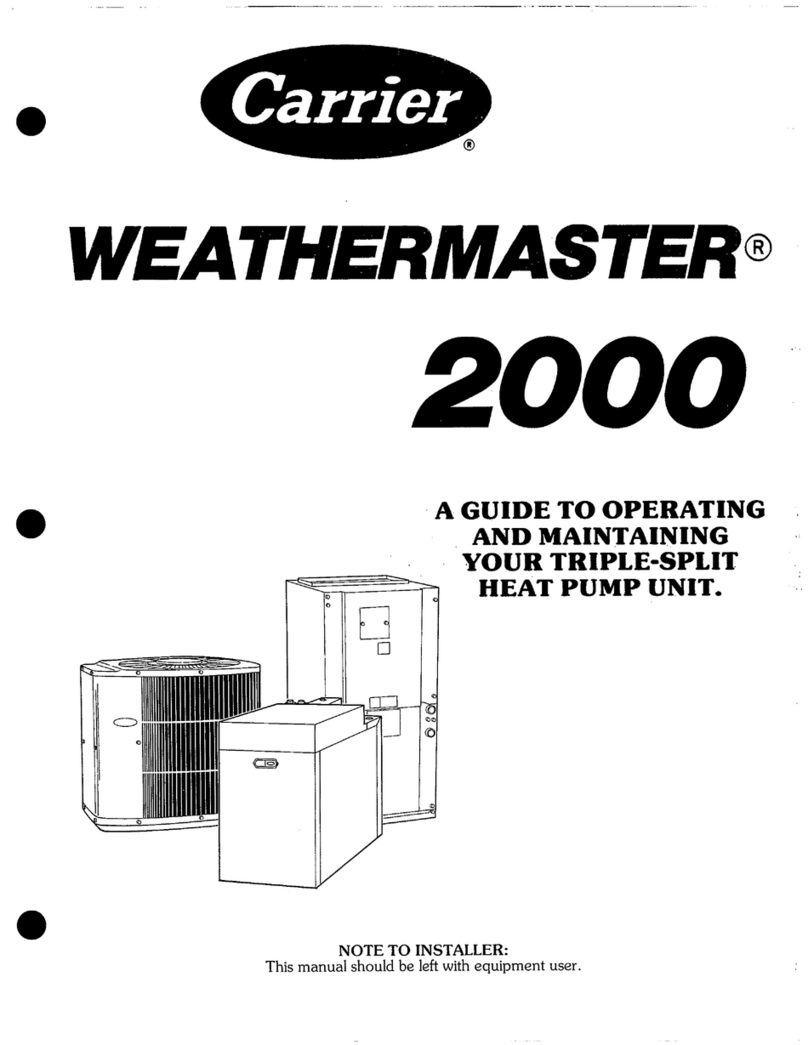
Carrier
Carrier WEATHERMASTER 2000 User manual

Carrier
Carrier 38QW User manual

Carrier
Carrier GH7T User manual

Carrier
Carrier Comfort 50VT-K User manual

Carrier
Carrier 50XZ024 Dimensions and installation guide
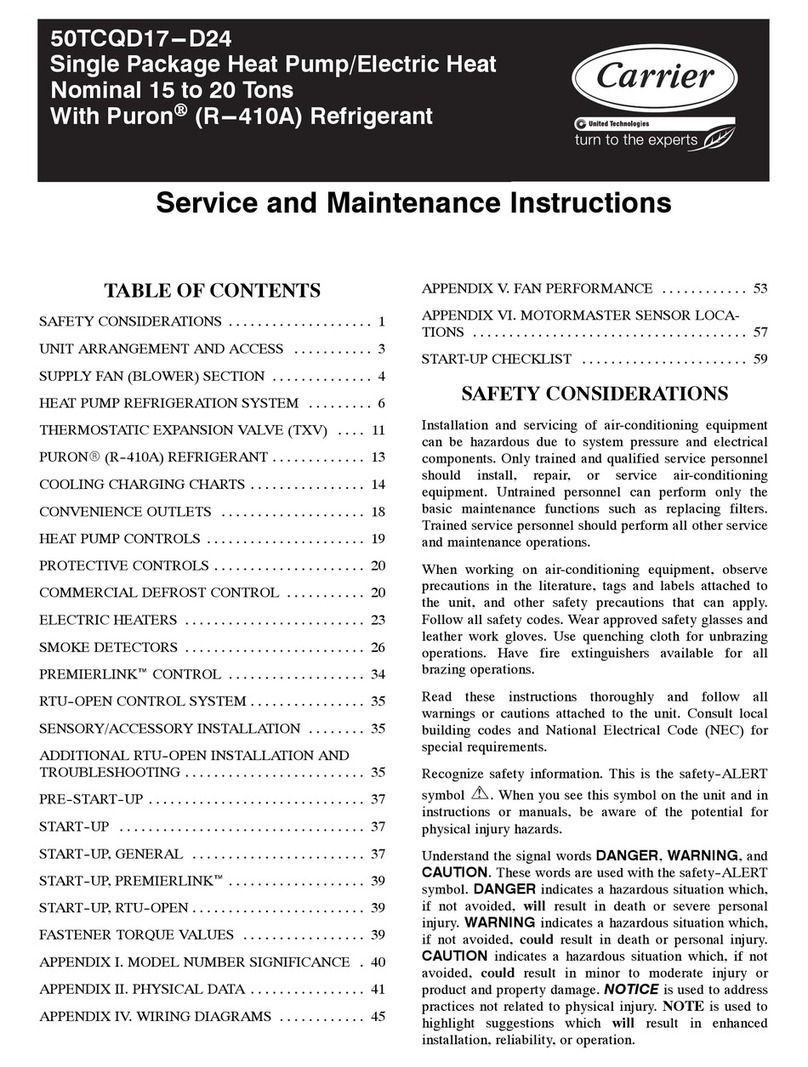
Carrier
Carrier 50TCQD17-D24 Installation and user guide
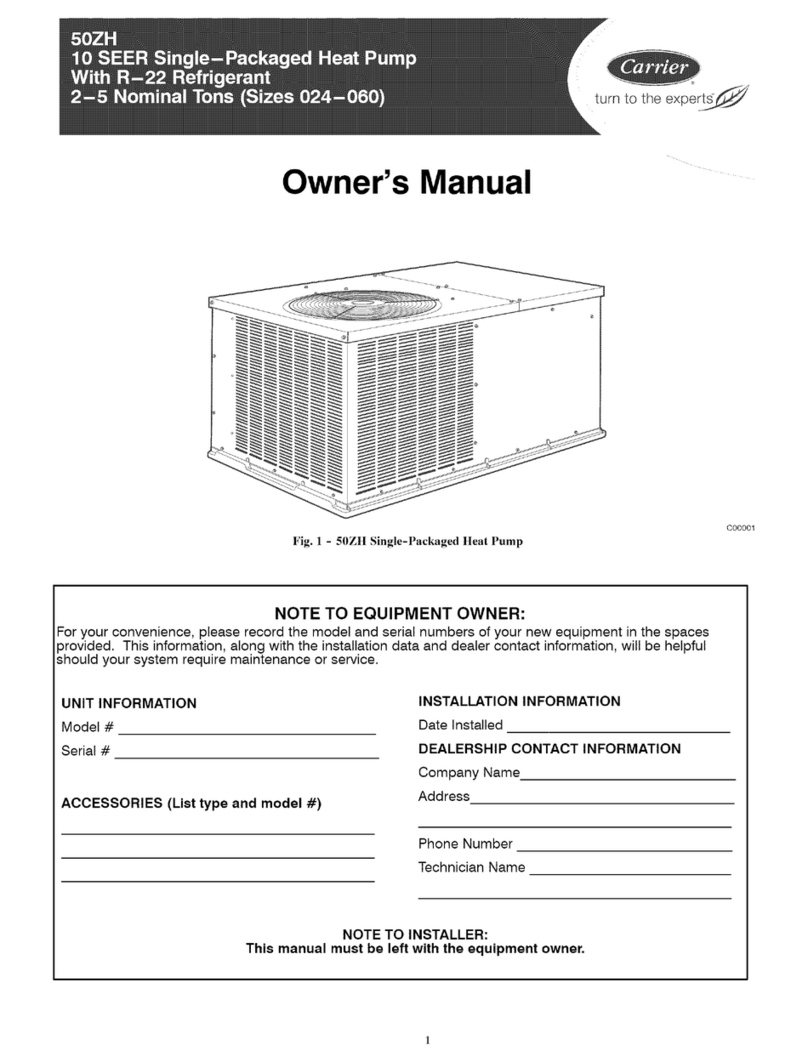
Carrier
Carrier 50ZH Series User manual
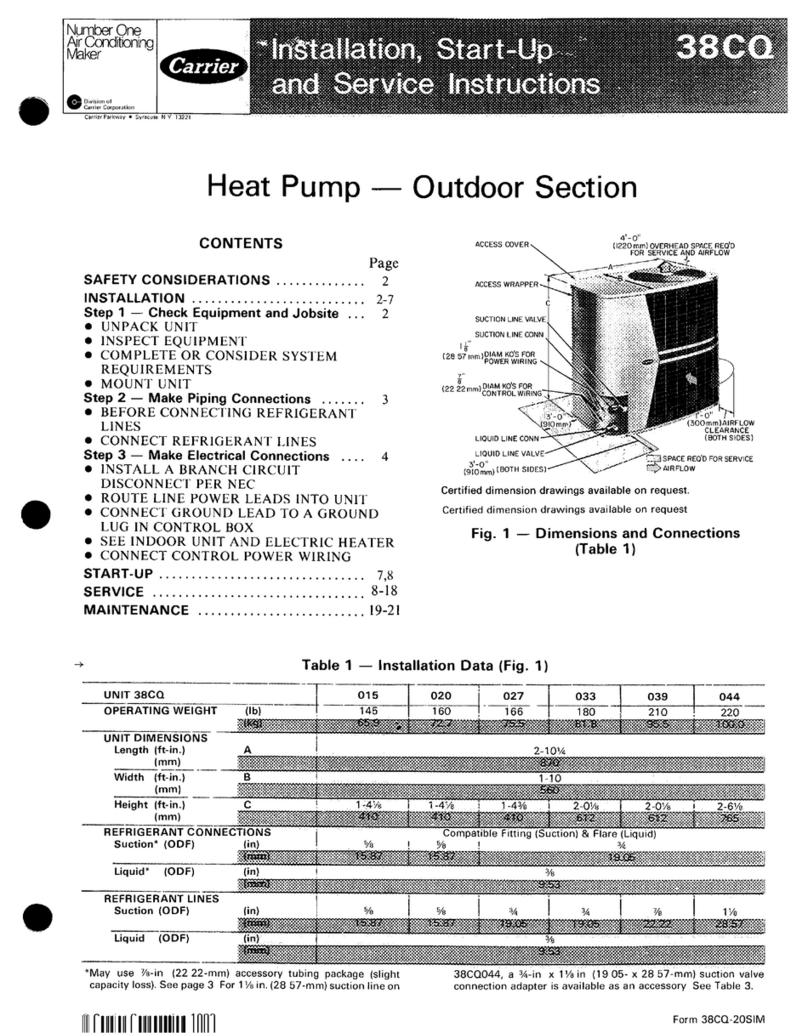
Carrier
Carrier 38CQ Dimensions and installation guide
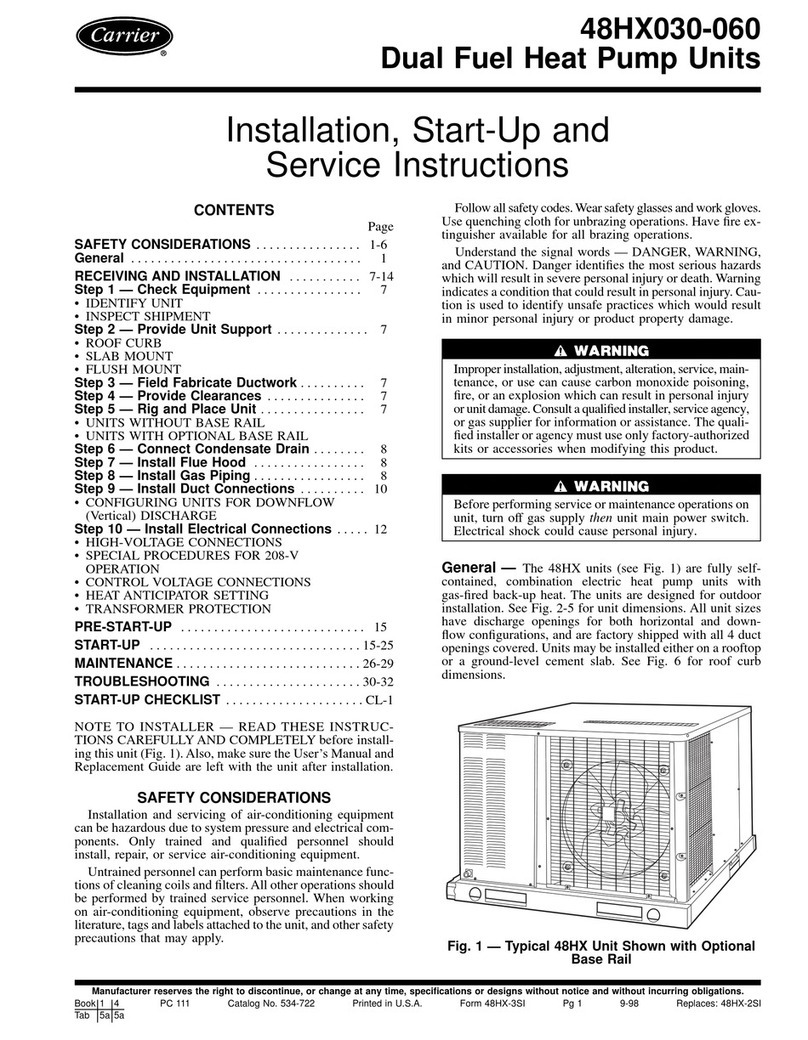
Carrier
Carrier 48HX030-060 Dimensions and installation guide

Carrier
Carrier 50ZH Series Assembly Instructions
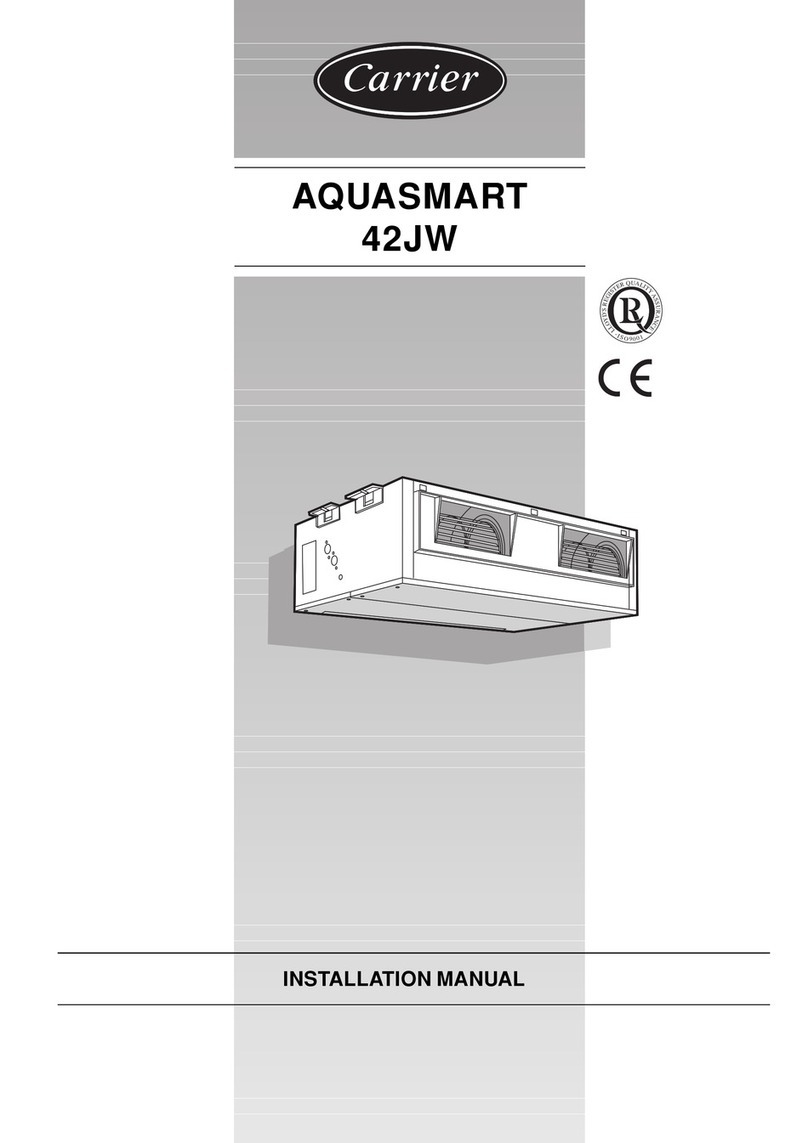
Carrier
Carrier AQUASMART 42JW Series User manual

Carrier
Carrier Weathermaster 48HJD Series Operation manual
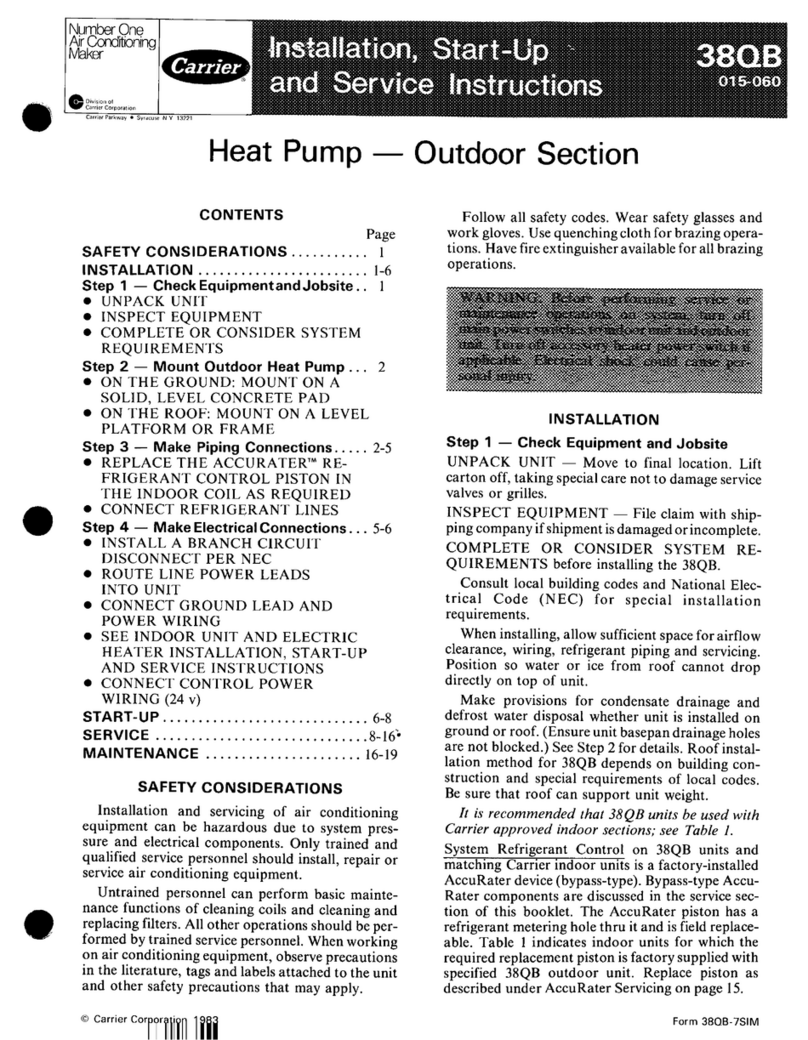
Carrier
Carrier 38QB Dimensions and installation guide

Carrier
Carrier 50JZ030 Assembly Instructions

Carrier
Carrier 38AQ012 Dimensions and installation guide
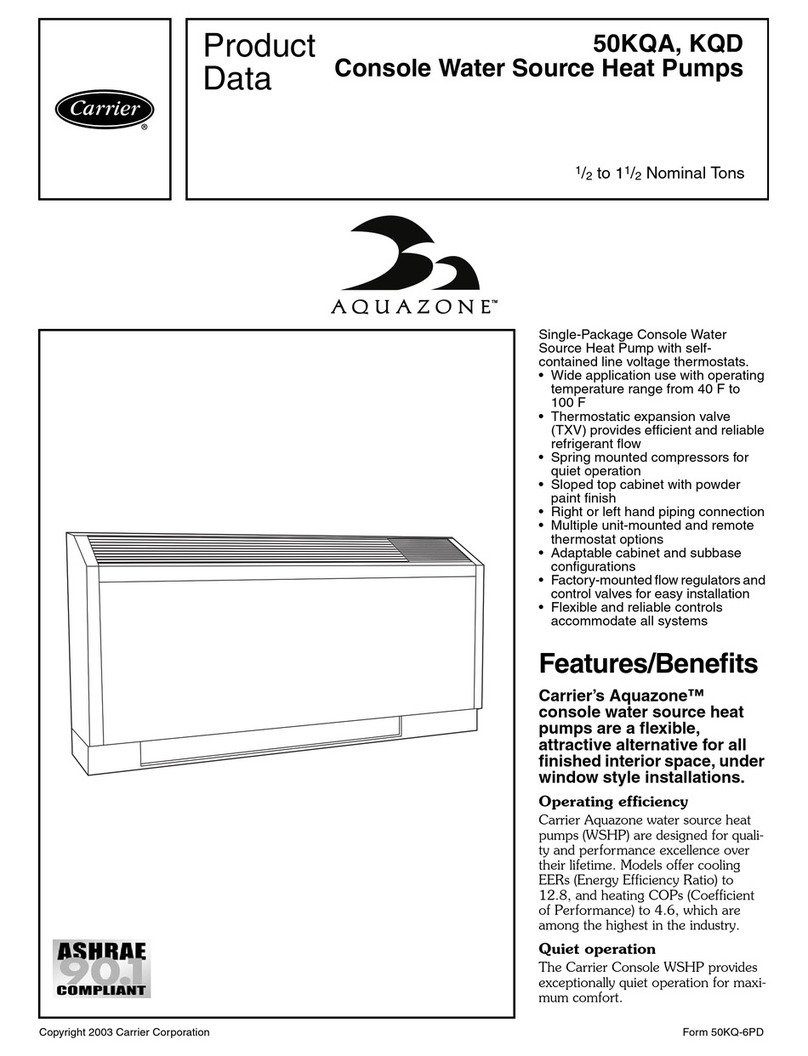
Carrier
Carrier 50KQA Operation manual
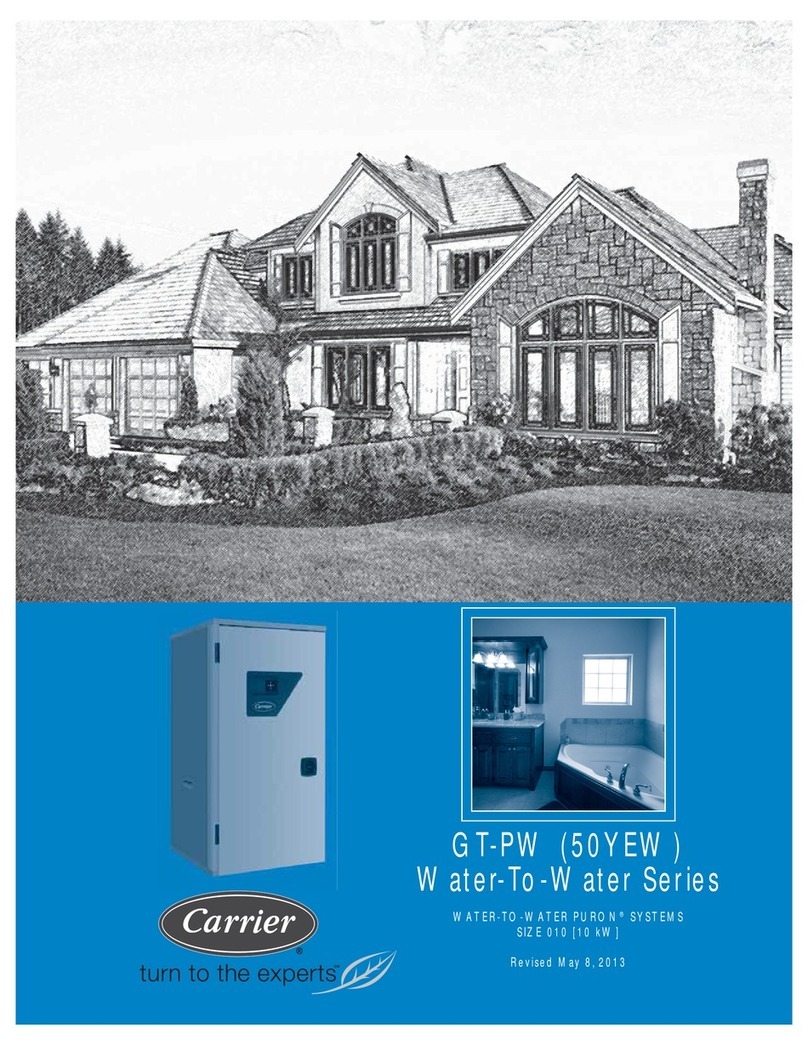
Carrier
Carrier GT-PW (50YEW) User manual
Popular Heat Pump manuals by other brands

Mitsubishi Electric
Mitsubishi Electric PUZ-SWM60VAA Service manual

Dimplex
Dimplex LI 16I-TUR Installation and operating instruction

TGM
TGM CTV14CN018A Technical manual

Kokido
Kokido K2O K880BX/EU Owner's manual & installation guide

Viessmann
Viessmann VITOCAL 300-G PRO Type BW 2150 Installation and service instructions

Viessmann
Viessmann KWT Vitocal 350-G Pro Series Installation and service instructions for contractors
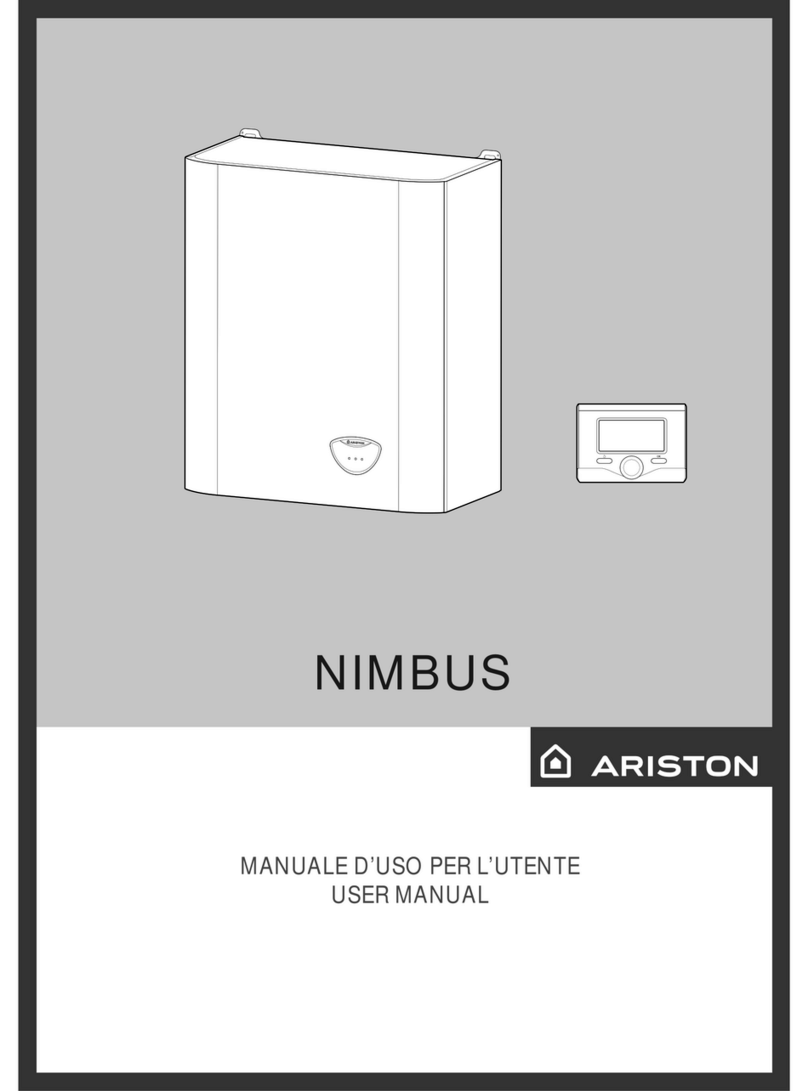
Ariston
Ariston NIMBUS user manual

Weishaupt
Weishaupt WWP L 7 Installation and operating instruction
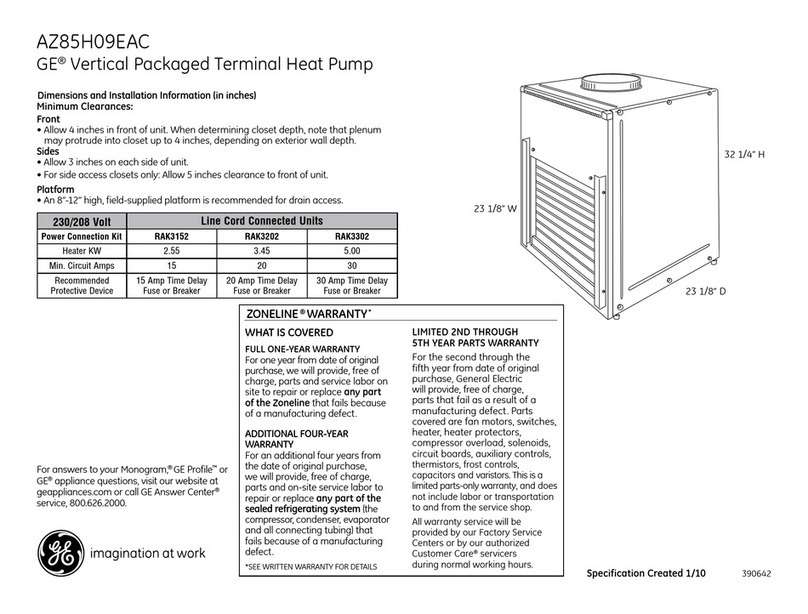
GE
GE Zoneline AZ85H09EAC datasheet
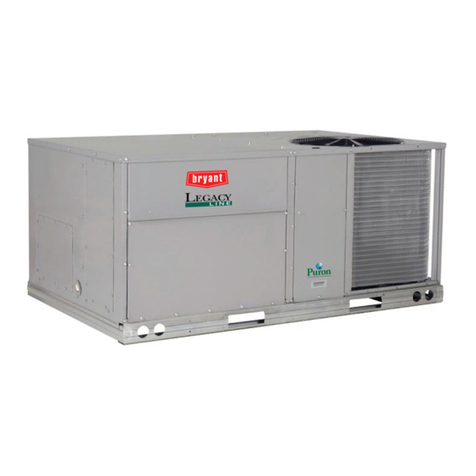
Bryant
Bryant Preferred Series installation instructions

Daikin
Daikin altherma EJHA04AAV3 installation manual
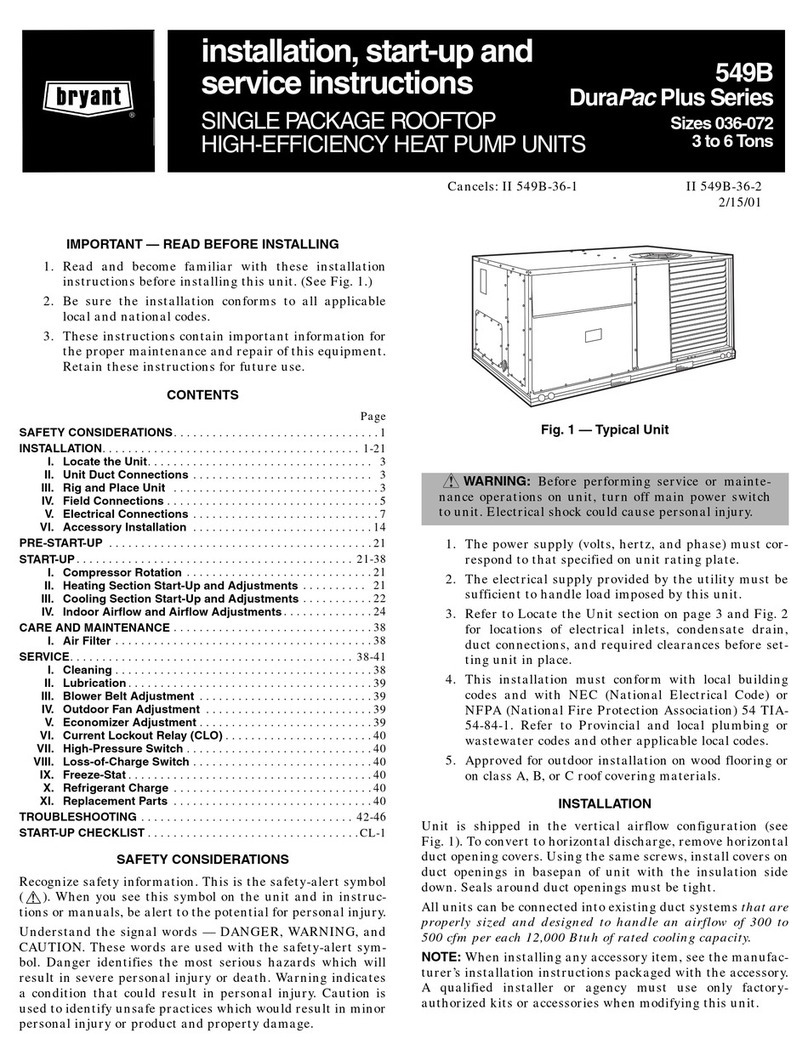
Bryant
Bryant 549B Series Installation, Start-Up and Service Instructions
